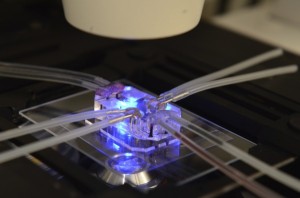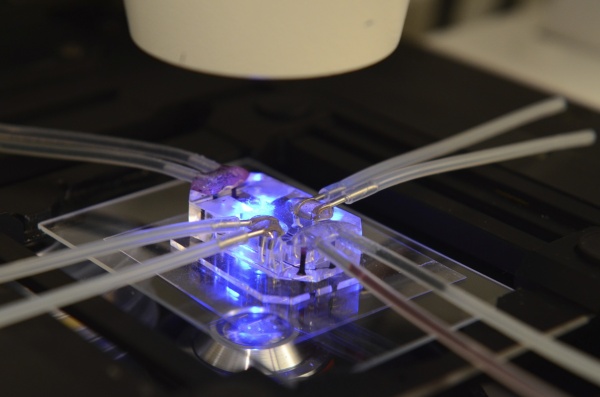
The National Institutes of Health (NIH) recently granted engineer Dan Huh from the University of Pennsylvania the NIH New Innovator Award, for his work in the development of small three-dimensional models of living human organs, known as “organs-on-chips.” The researcher will now receive $1.5 million over five years for the development of microfabricated systems aimed at simulating sick human lungs.
Huh, who is a Wilf Family Term Assistant Professor in the School of Engineering and Applied Science’s Department of Bioengineering, engaged in this project in the belief that the technology may help other investigators study the progression of chronic lung diseases like asthma, as well as accelerate research regarding new therapies. The applications of the innovation include basic physiological research, drug testing, or even environmental monitoring.
“I try to learn from the design principles invented by nature. Organ-on-a-chip systems simulate our own physiology so that we can better understand it,” Huh said in a Penn release. The organs-on-chips are three-dimensional microfluidic devices that are the size of erasers, based on living human tissue and flexible polymeric scaffolds that accurately mimick models of human organs.
[adrotate group=”3″]
“Researchers traditionally use cell cultures or animal models to study disease,” explained the researcher. “But often, these models fail to accurately simulate key biological processes that mediate disease progression and exacerbation in humans. Using our microengineered model systems that mimic the most salient features of living human organs, we may be able to better understand the underlying mechanisms of various diseases and develop more effective drugs.”
 The NIH grants, which are meant to support young investigators developing creative and potentially high-impact research projects, will now allow Huh to start developing three-dimensional models of small-sized airways, smaller than 2 millimeters of diameter air passages, in the human lung. “There is convincing evidence that small airways deep in the lung play an important role in asthma. But we lack fundamental understanding of how these airways contribute to the development and progression of the disease,” he explained.
The NIH grants, which are meant to support young investigators developing creative and potentially high-impact research projects, will now allow Huh to start developing three-dimensional models of small-sized airways, smaller than 2 millimeters of diameter air passages, in the human lung. “There is convincing evidence that small airways deep in the lung play an important role in asthma. But we lack fundamental understanding of how these airways contribute to the development and progression of the disease,” he explained.
Huh believes that by recreating airways, he will be able to understand the pathological abnormal biomechanical forces that occur in asthma attacks, during which the lung cells are constricted by these forces that cause excess of mucous. In addition, the engineer also plans to study the effect of the mechanical forces in disease symptoms like airway inflammation and tissue remodeling.
“Our work is driven by a need for new enabling tools in biology and medicine. Design of research in my group often begins with understanding the technical challenges faced by biologists and clinicians. This approach greatly facilitates our efforts to develop innovative bioengineering technologies with the potential to make a real impact,” Huh said.
Prior to working at the School of Engineering and Applied Science, Huh served as a postdoctoral research fellow at Harvard University’s Wyss Institute, which was where he started developing the organs-on-chips for the first time, in collaboration with Donald Ingber.

